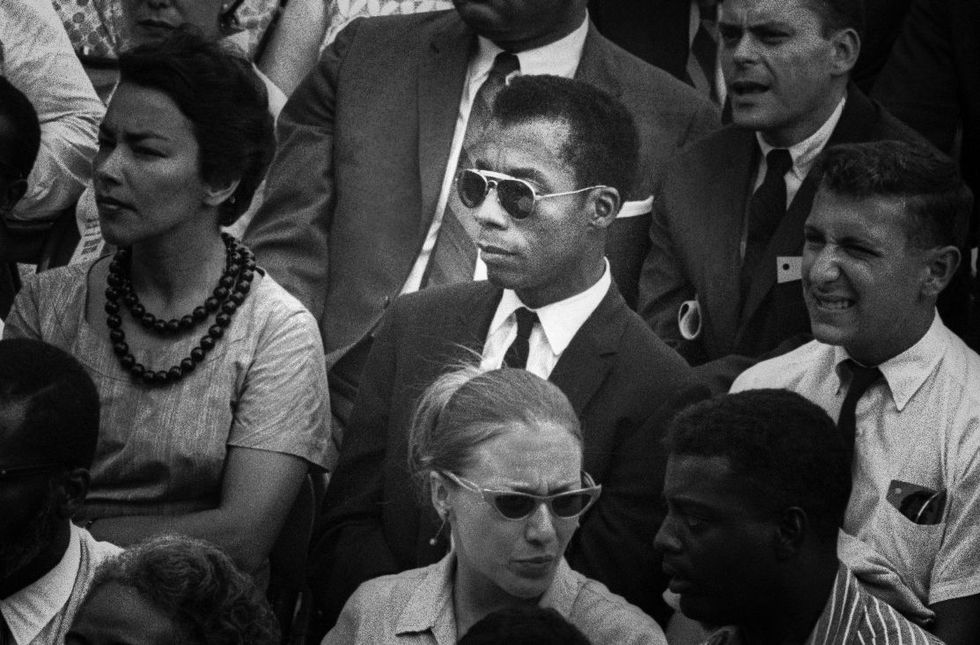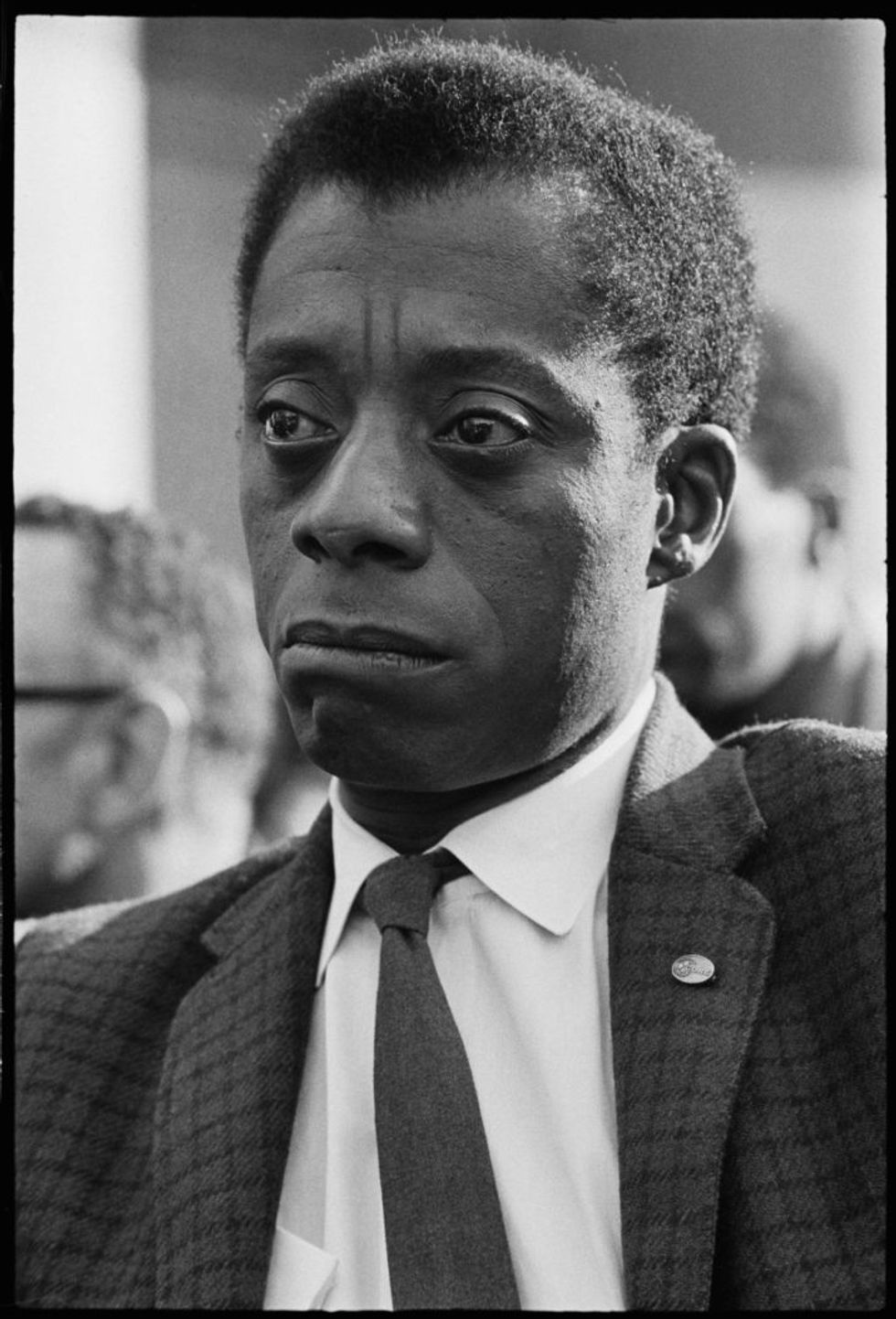Meet Raoul Peck, Director of the Powerful New James Baldwin Documentary 'I Am Not Your Negro'
The filmmaker behind 'I Am Not Your Negro' discusses James Baldwin and the creative process behind his unconventional new documentary.

“The story of the Negro in America is the story of America. It is not a pretty story. What can we do?”
In the wake of the 2016 presidential election, many people have been asking themselves the same question that James Baldwin posed almost 30 years ago in his unfinished manuscript, Notes Toward Remember This House. The answers are to be found in Raoul Peck’s latest documentary, I Am Not Your Negro. But, they aren’t pretty.
I Am Not Your Negro showcases Baldwin at his best and brightest; from heartbreaking reflections on the assassinations of his three close friends, Martin Luther King Jr., Malcolm X and Medgar Evers to searing critiques of America’s contradictory values and ideals.
At the same time, Peck burns just as brilliantly behind each thoughtful juxtaposition. Photographs of Black Lives Matter protesters are stitched alongside familiar Jerry Springer footage and saturated shots of Times Square. Clips from classic films like A Raisin in the Sun and The Imitation of Life are sandwiched between images of African-Americans being lynched and a montage that perfectly illustrates the monotony of apologetic politicians.

With Baldwin’s words serving as the base of the film (and Samuel L. Jackson’s narration, the complementary glaze), Peck provides a deft layering of rich archival material to illuminate Baldwin’s visionary deconstruction of race and identity in America. This ambitious joint effort results in what Peck envisions to be the completion of Baldwin’s final book, Remember This House.
“Gloria Baldwin, Baldwin's younger sister, she gave me those [manuscript] pages and said, ‘You should look at this. You might use it,’" Peck told me during a recent sit-down interview. “For a writer or filmmaker, it's just great to have a story clear, a project that was never made. Then you can say, ‘Wow, I'm going to make it.’ From the get-go, it was always about, ‘How can I bring Baldwin to the forefront?’ It was really a project where I wanted to use all my skills and make sure that it's a film that will stay.”
After discussing our identical surnames and respective family heritage, Peck and I sat down to discuss the 10-year process of making I Am Not Your Negro and Baldwin’s timeless thoughts on being Black in America.
This interview has been condensed and edited for clarity.
Can you talk a bit about the process of layering throughout the film? Where did you begin?
Well, obviously, I had to begin with the words because the words were central. I had to make the original selections of these words. The notes from Remember This House were just one particular aspect that I found interesting, mainly the decision to lead the three lives of Medgar Evers, Martin Luther King and Malcolm X and to create this relationship between those three and understand what they meant historically. I don't know of any instance where anybody tried to put Martin Luther King and Malcolm X together. Baldwin could do that.
Once you have that, the other story is, what is important today. You were talking about pop culture. One of the greatest critics of that is Baldwin and one of the greatest deconstructors of that is Baldwin. He did the whole analysis of the creation of the Black image, the role of Hollywood in our consciousness, in our fantasies, and the role of today's TV.
He tells you that the industry functions as a narcotic. This is exactly what reality TV today does to you. He wrote that 40 years ago, but the analysis is correct, still today. It's even worse today because now you have how many channels and how many screens? Twitter, Facebook, this and that. Where do you find the time to think? How do you build your opinion when you are submerged incessantly with information and data? By the way, not the best data. You get the minimum of substance. This is the strength of Baldwin analysis. That it's still totally functionable, that it's still totally efficient.

One thing I really enjoyed in the film was how you were able to flesh out certain individuals who have achieved legendary or iconic statuses, like Malcolm X, Lorraine Hansberry, and Sidney Poitier, and give them a more multi-dimensional context.
Well, what I did was just the choice of material, but that particular work was already done by Baldwin. Baldwin had written on Sidney Poitier, for example. He had written about Lorraine Hansberry as well. He was the contemporary of all those people, and even more, they were his friends.
Right.
When you're a friend of Baldwin, it's not just the world like this, it's really intimate. He had that support, and he supported them in times of hardship. It was a time when there weren't that many of them, and they knew each other, and they worked with each other. They called each other, they engaged together.
It's always great the way Baldwin wrote about that because it's always a mixture: part history lesson, part deconstruction, but also parts of very intimate thoughts and also of poetry. It's always a mixture of different aspects, which I like, which I try to do in all my films, to create a work of art. Baldwin knew how to do that. He knew how to be an intellectual, but at the same time, to be a human being. You can always understand him, no matter what your level of education is. He talks the talk of the street, with substance and eloquence. His eloquence is multifaceted.
Let’s talk about the decision process in terms of layering all the images and visuals for the piece. It wasn't necessarily in chronological order. There were the Black Lives Matter visuals folded in, as well as the photographs of Black people who’ve been killed more recently by police.
You have to see that once you sit in front of the finished film, you're talking over almost a ten years process. Which means every second of the film is a result of a tremendous amount of work. It's like a chess play where you can't touch it without dire consequences. It's an ongoing process because you can't predict where you will be after doing that edit. It will have a consequence, and you have to deal with that consequence, so it's always a back and forth. Sometimes you have to take it back because where it’s bringing you, you can't solve it.
The more you work on it, the more time you give yourself and the more you know what is essential and what is not. Your first idea, even though it's original, is great. But, after a while, you get used to it. You say to yourself, "Well, I can do better. I can go further than that." That's the process, and you need to go through that process.
Patrice Peck lives at the intersection of culture, technology, new media and #blackgirlmagic. When she’s not putting an end to #blacksalonproblems with her beauty services startup CRÈME, she’s pondering her next hairstyle and exploring New York City.
Follow her on Instagram at @speakpatrice.
British Nigerian Actor Jimmy Akingbola Says There’s More Work to be Done
The ‘Bel-Air’ and ‘Sorry, I Didn’t Know’ actor featured as part of the Global Impact of Black Culture panel at the Okayplayer House Presented by BET during this year’s Art Basel Miami Beach.
“No one can do it better than you:” Ala Kheir on the Hopeful State of African Photography
Sudanese photographer Ala Kheir encourages all African photographers to apply to the World Press Photo contest, which he will chair in 2025.

